#stuarts draft va
Text

Stuart's Draft, VA
#abandoned#empty spaces#abandoned homes#rural america#small town america#rural gothic#old ghosts#not my pic
17 notes
·
View notes
Text
We Buy Houses In Stuarts Draft VA Is Your Choice To Selling Your House Fast
The Virginia Home Buyer focuses on buying houses fast in Stuarts Draft VA. We specialize in helping homeowners navigate divorce, probate, bankruptcy, short sales, tax liens, and more.
https://www.thevirginiahomebuyer.com/sell-my-house-fast-stuarts-draft/
Facebook
Linkedin
Google Maps
Trusted REI
1 note
·
View note
Text
The Virginia Home Buyer is a premier & reliable cash house buyer in Virginia
The Virginia Home Buyer is your solution to sell your house fast for cash. We specialize in purchasing properties off-market and as-is, without the need for realtors, commissions, and fees. We can help navigate foreclosure, bankruptcy, tax liens, unwanted rentals, probate, and more.
The Virginia Home Buyer
279 Draft Ave #103 Stuarts Draft, VA 24477
(540) 471-9379
https://www.thevirginiahomebuyer.com/
Facebook
Linkedin
Google Maps
Trustedrei
1 note
·
View note
Photo

Jean Wideman Sandy of Waynesboro, Va., passed away quietly at home surrounded by her family on Sunday afternoon, July 24, 2022. Jeannie, as she was known to her family and friends, was born on August 17, 1930, in Trenton, New Jersey. Jeannie's father, the Reverend Charles Edgar Wideman, was an ordained Presbyterian minister who served as chaplain on the island of Guadalcanal during World War II. Jeannie's mother was Dorothea "Dot" Leech. Chuck and Dot had three girls, Jeannie, the eldest, followed by Barbara, and Kathy. Jeannie and her sisters grew up in the Mid-Atlantic and Virginia as her father served in the Army and pastored different churches. The family arrived in Greenwood, Virginia in 1946 where the Reverend Wideman pastored Lebanon Presbyterian until 1959.
Jeannie graduated from Greenwood High School and attended Bob Jones University in Greenville, S.C. While in high school, Jeannie met her devoted husband of 67 years, Lynwood W. Sandy Jr, of Crozet, Va. After Lynwood served in the U.S. Army during World War II in France, they married and lived with her parents briefly in Afton, Va. Jeannie and Lynwood then moved to Waynesboro, Va. Jeannie worked for several years at the Va. Department of Transportation as a draftsman's assistant and Lynwood worked at Baugher Chevrolet until his retirement. They had two children, Kim Sandy Teague of Charlottesville, and David Bradford Sandy of Lyndhurst. Jean was a homemaker and enjoyed reading, exercising, fashion, and interior design. Mrs. Sandy attended church faithfully and in her younger years taught Sunday school, sang in the choir, and served various church committees and causes. Most recently she enjoyed the worship music at Cornerstone Church of Augusta where she attended faithfully for over ten years.

Jean Sandy was preceded in death by her parents; sisters, Barbara W. Brown and Kathryne R. Wideman; and husband Lynwood, who died on October 3, 2018. She is survived by her son, David, and wife, Donna Lilley Sandy, of Lyndhurst, Va. David is the associate pastor of Cornerstone Church of Augusta. Mrs. Sandy is survived by one grandson, David "Brad" Sandy Jr. of Stuart's Draft, Va., and wife, Brittany Riley Sandy; and one great-grandson, Christian David Sandy. Mrs. Sandy is also survived by her daughter, Kim and husband, Dr. W. Gerald Teague of Charlottesville, Va.; niece, Jacquelyn Brown Roberts of Waynesboro; nephew, Jeffrey Charles Brown Sr. (deceased) and his wife, Margaret E. Brown, of Charlottesville; niece, Jennifer Leigh Brown of Crozet; grandnephew, Shawn Christopher Brown Roberts, and wife, Kelly Gurley Roberts, of Greenwood; grandnephew, Jeffrey (Jay) Charles Brown Jr. and wife, Mayan Brown, of Charlottesville; grandniece, Erinn Brown Wilder and husband, Cody Wilder, of Richmond. Jeannie is survived by cousins, David Wideman of Tennessee, and Robin Wideman of Mississippi. Nieces and nephews of California include Cheryl Kliewer Meyer (Michael), Ronnie Kliewer (Dorothy), Charles Kliewer, and Kristin Kliewer. Jeannie is also survived by nephew, Robert W. Sandy of Richmond; grandnephew, George W. Sandy of Denver Colo.; and grandniece, Charlotte W. Sandy of Richmond, Va. She is survived by other special nieces, nephews and cousins as well.
A graveside service will be held at 5 p.m. on Sunday, July 31, 2022, at Lebanon Presbyterian Church in Greenwood, Va., Pastor Greg Mayo, officiant. Following the graveside service there will be a reception and meal for the family to receive friends at Cornerstone Church of Augusta. Cornerstone Church is located at 1156 Tinkling Spring Road, Staunton, about one mile from I-64 in Fishersville. In lieu of flowers, donations may be made to Cornerstone Church of Augusta, in support of the Worship Team, or to Women's Comfort Care (WCC) of Staunton, Va.
#Bob Jones University#Archive#Obituary#BJU Hall of Fame#BJU Alumni Association#2022#Class of 1951#Jean Wideman Sandy
0 notes
Text
SOLUTION AT Academic Writers Bay 1 How Does Phonemic Awareness in ESL Learners Impact Reading and Writing? Anthony S. Terrell J.E.B Stuart High School Fairfax County (VA) Public Schools Submitted June 1999 Abstract This paper documents the findings of an 18-week action research project to measure the effectiveness of a curriculum which included systematic phonemic instruction provided to two experimental groups of students, versus a traditional whole-language curriculum that did not include this instruction, provided to two control groups of ESL learners. A total of thirty-eight intermediate level secondary ESL learners were divided into four groups, two high intermediate groups and two lower intermediate groups. One group at each level served as the experimental group, the others as the control groups. The experimental group participated in the curriculum featuring Jane Fell Green’s Language! program as part of a traditional whole-language approach to second language instruction. Language! is a reading/language program that is sequential, cumulative, and taught to the level of automaticity. Students in the high intermediate experimental group averaged a gain of 12.2 points on the Degree of Reading Power (DRP) post-test over pre-test scores. Those in the control group posted an average 6.8 point gain on the same test. Students in the lower intermediate experimental group scored an average 9.5 point gain on the DRP post-test over pre-test scores. The lower intermediate control group posted an average 10.4 point gain. In the area of writing, the lower intermediate group posted a 1.1 point gain in pre and post writing scores on a writing sample, compared to a 0.3 point gain posted by the control group. There was no significant change in writing scores at the higher intermediate level. The results of the research suggests that phonemic instruction is of greater benefit to high intermediate level ESL learners’ reading and that the instruction benefits lower intermediate ESL learners’ writing. Both quantitative and qualitative research findings are presented. The Question How does the phonemic awareness of ESL learners impact second language acquisition as measured by facility in reading and writing? This question came to me during my first semester at Stuart High School. I was teaching three different groups of intermediate level ESL learners Process Writing, using Native American and Chinese proverbs as writing topics. As we worked to master the various steps of the process: formulating what to write (prewriting); starting to write (rough draft); focusing what has been written; correcting (revising); and finally presenting a final draft and publishing, many of my students had little difficulty finding what to write once shown how to first organize their 2 thoughts on a chart, then into a paragraph, and ultimately into an essay. Students often had much to say, had enough passive vocabulary to say it, but lacked the ability to use that passive vocabulary to effectively put their thoughts onto paper. The perennial question in the room became, “How do you spell…how do you spell….Mister, Mister, how do you spell?” My natural response to the numerous spelling inquires was a good oldfashioned, “I am not going to tell you. Get the dictionary.” I soon realized that instead of having the intended effect of helping students build both vocabulary and a sense of academic self-reliance, my response often caused even more frustration and withdrawal from students. Why? Quite simply, students often had little idea where to even begin to look in a dictionary for the word they were trying to spelling. The sounds of the words students knew they wanted to use had no connection to the symbols that represent those sounds in the English language. My students had little-to-no phonemic awareness. What impact was this having on their ability to express themselves in writing? Additionally, was this why I was hearing them stumble over words in print that I was sure I had heard them use? I have heard it said that good readers are usually good writers.
If this is true, then the converse may also be true. What does the research say? The Research There is a significant amount of research pointing to the essentiality of teaching phonemics as a part of reading instruction. Much of it was done in response to the argument over whether it is better to teach reading through phonics only or through whole-language only. It is fair to say that there is at least as much research supporting whole-language as the optimum way to teach reading. There is little information about teaching reading using a blend of the two methodologies. Since the focus of this research study is to determine if there is a clear advantage for students in teaching a curriculum containing systematic phonemic instruction over one that does not, we focus on research concerning the effectiveness of the phonemic approach. Both the control groups and the experimental groups are exposed to structured language in a whole-language context; but the experimental group is also receiving systematic, phonemic instruction. The aim here is to determine what the research says about this added component to the curriculum. What is phonemic awareness and of what benefit to reading and writing in ESL learners is it? Stanovich (1993-94) defines “phonological awareness” as the ability to deal explicitly and segmentally with sound units smaller than the syllable. In terms of importance, he found that phonological awareness is the best predictor of the ease of early reading acquisition. In agreement, Lundberg et al (1988) also indicate that students who increased their awareness of phonemes facilitated their subsequent reading acquisition. That research goes on to say that phonological awareness can be taught, which conflicts with the pure whole-language argument that phonological awareness is only truly naturally acquired. As for how phonemic awareness relates to writing, Greene (1998) cites Lyon’s (1998) observation that throughout history, most societies never 3 developed a written language. Written language is invented; it is code based. In order to become literate, students must master the code. To master written English, the entire code must be taught systematically (Green 1998). Adams (1990) suggests that it is critical for children to be able to link phoneme awareness to knowledge of letters. This is known as “sound symbol matching.” The two most powerful skills that predict later reading success in students are letter-name knowledge and phonemic awareness (Cunningham, 1990; FieldingBarnsley, 1997; Philips and Mason, 1996). The research suggests that a balanced approach is needed in reading instruction. Phonemic awareness alone does not address the needs of older students, like the ones in this study, for higher level thinking activities. Wholelanguage instruction alone assumes wrongly that a student can acquire the skills associated with affective reading and writing naturally, through mere exposure to literature or through a language-rich environment. Sensenbaugh (1996) feels the right approach would combine the language- and literature-rich activities associated with whole language activities aimed at enhancing meaning, understanding, and the love of language with explicit teaching of skills as needed to develop fluency associated with proficient readers [and writers]. The Students All three of the ESL classes (groups) assigned to me were involved in this action research project. Two different groups of students assigned to two different ESL teachers in the department served as the control groups to my groups 1 and 2. This provided me a large cross-section of grade-levels, native languages, years and types of prior schooling, and ages. Each of these was important in trying to determine: one, if there is a critical period among secondary students for raising phonemic awareness; two, whether raising phonemic awareness benefits native Spanish speakers over native speakers of Vietnamese or Arabic; and three, if literacy in the native language is aided by phonemic awareness in second language acquisition.
Students were distributed as follows: Experimental Groups Control Groups Group 1 No. of students: 10 Grade Levels: 9th – 4 10th – 5 11th – 1 Native Languages: Spanish – 5 Somali – 2 Arabic – 1 Kurdish – 1 Vietnamese – 1 Group 1 No. of students: 10 Grade Levels: 9th – 5 10th – 2 11th – 3 Native Languages: Spanish – 4 Arabic – 1 Urdu – 3 Bosnian – 1 Vietnamese – 1 4 Group 2 Group 2 No. of students: 11 Grade Levels: 9th _ 2 th _ 10 8 11th – 2 Native Languages: Spanish – 7 Bosnian – 1 Arabic – 1 Urdu – 1 Somali – 1 No. of students: 7 Grade Levels: 9th – 5 10th – 2 Native Languages: Spanish – 3 Arabic – 1 Urdu – 2 Vietnamese – 1 The Program The specific program designed to raise the phonemic awareness of students in this study is simply called LANGUAGE! It is a three level, 54-unit, whole language within structured language program. According to the program’s author, Jane Fell Greene (1998), Ed.D., structured language refers to a special type of reading/language program that is sequential, cumulative, and taught to the level of automaticity, the ability to perform a learned task quickly and accurately with little conscious attention or effort. Louisa C. Coates (1998) says the strength of the LANGUAGE! curriculum is its comprehensive and integrated treatment of language, pointed directly at the skills poor readers typically lack. She goes on to point out critical concepts about language (sounds, spellings, syllables, sentence structure, grammar, semantic organization, and text structure) are defined, ordered, and practiced in relation to one another. They form the fabric of language. In the research project, LANGUAGE! was presented to the experimental groups as part of a multifaceted approach to language teaching. It was not taught in isolation or singularly. The curriculum served as a warm-up or primer for reading comprehension, process writing, interviewing and reporting, sustained silent reading and other now traditional whole-language activities in which students were engaged during the same 90-minute lesson. The topics raised in the experimental part of the curriculum were dovetailed and highlighted in other activities throughout the lesson. LANGUAGE! merely suggested the scope and sequence of sounds, symbols, and grammar concepts of which students should be made phonemically aware. The Implementation Step 1: Students in both the experimental groups and the control groups were given a code-based placement test. [Test Words: a, bat, cat, fat, sat, cab, mat, Sam, Tam, Bam] a) The instructor dictated each word, gave a sentence containing the word, and then repeated the word. b) The students wrote the word. 5 c) The teacher scored the placement tests, identifying the number wrong at each level. d) The teacher identified the number of the first Unit at which each student made two or more errors. e) The teacher identified the book where the students began. Step 2: Students in all five groups (3 experimental, 2 control) tested at Unit 1. That is, of the 51 students tested, none could spell more than eight of the words listed above. Step 3: Students were instructed for 15-20 minutes each day on the phonology concepts of units 1-17. Each unit is designed to build students’ mastery over a particular sound, i.e. short “a” and the letter (grapheme) associated with it. In the beginning units, students engaged in: phoneme reproduction/replication; phoneme isolation; phoneme segmentation; phoneme blending; rhyming; phoneme deletion; and phoneme substitution. Units progress in size and scope of phonemic (syllabication) /grammatical (parts of speech) material presented. Step 4: At the end of each unit, students were tested on the material presented in the unit. Results Empirical High Intermediate Group Reading (DRP) Writing (Rubric-scored writing sample) Experimental Control 12.2 point gain 0.8 point gain 6.8 point gain 1.0 point gain Experimental Control Low Intermediate Group Reading (DRP) gain Writing (Rubric-scored writing sample) gain • • 9.
5 point gain 10.4 point 1.1 point gain 0.3 point Explicit ESL instruction has a greater impact on higher-level students’ reading than that of lower-level students. It is thought that this is due in part to those students’ possessing a larger inactive or passive vocabulary from which to draw than do lower-level students. Explicit ESL instruction has a greater impact on lower-level student’s writing than that of higher level students. It is thought that lower-level 6 students benefit from the lowering of affective filters associated with writing. Raising phonemic awareness lowers those filters. Anecdotal Observations These quotes are from teachers observing research project students in a class other than ESL: • • • • • “Sahro sounded-out the following words and actually used her fingers [one of the skills taught in the program] to break-up the sounds: ‘hideous;’ ‘humiliating;’ ‘collapsed;’ ‘nominate.’” “In our reading today, Gusma came across words she did not know. At first she wanted me to tell her the words. I reminded her of the sounds she is learning in your class and to use them; look at the words and apply the sounds she knows. She figured out the following words: ‘unpredictable;’ ‘antique;’ ‘thrilled;’ ‘fabulous;’ ‘astonished.’” “Agus, during his individual reading, noticed the “qu” sound in figuring out a new word in his novel. The “g” sound is another one he mentioned he had learned and used to figure out a word.” “During our reading session today, Tina was wonderful. She tried to sound out every word she was not sure of and sincerely met success.” “Roland had trouble with “thr,” but he could do “th.” He was cognitive of the sound and he tried to use it. When the “th” was followed with an “r” he had trouble. Conclusion It is clear from the research project that raising the phonemic awareness of ESL learners impacts positively both reading comprehension and writing skills. The degree to which these areas are impacted varies with the ESL level, native language, and years of schooling each student presents. Phonemic awareness seems to unlock the substantial passive English vocabulary older ESL learners bring with them, but are unable to access or decode from written text. It is similarly true that students would use this same passive vocabulary in their writing if they could only encode it. It is now available to them through the newfound ability to match sounds with symbols. Much of the anxiety my students associated with reading and writing at the beginning of the study has all but dissipated. As evidenced in the anecdotal references found in the results, students are now actively reading for both pleasure and academia and have become measurably more prolific in their writing. These are two of the consequences intended with the implementation of the phonemic awareness piece of the program. Having a systematic approach to phonemics as a part of a rich, whole-language curriculum is the complete package needed to build solid reading comprehension and writing skills in ESL learners. 7 References Cunningham, A.E. (1990). Explicit instruction in phonemic awareness. Journal of Experimental Child Psychology, 50, 429-444. Fielding-Barnsley, R. (1997). Explicit instruction in decoding benefits children high in phonemic awareness & alphabet knowledge. Scientific Studies of Reading, 1, 85-98. Greene, J.F. (1998). Middle and High School Students: Effects of an Individualized Structured Language Curriculum. Annals of Dyslexia, Vol. 46. Baltimore: The Orton Dyslexia Society. Lundberg, I. et al. (1988). Effectiveness of an Extensive Program for Stimulating Phonological Awareness in Preschool Children. Reading Research Quarterly, 23(3), 263-284. Lyon, G.R. (1998). Why reading is not a natural process. Educational Leadership, 55:6, 14-18. Phillips, L.M., Norris, S.P. & Mason, J.M. (1996). Longitudinal effects of early literacy concepts on reading achievement: A kindergarten intervention & five-year follow-up. Journal of Literacy Research, 28, 173-195.
Sensenbaugh, R. (1996). Phonemic or Phonological Awareness? ERIC Digest, 5-6. Stanovich, K.E. (1993-94). Romance and Reality (Distinguished Educator Series). Reading Teacher, 47(4), 280-291. 1 How Does the Use of Reading Strategies Improve Achievement in Science for Language Minority Students? Shannon Hicok Glasgow Middle School Fairfax County (VA) Public Schools Submitted June 2000 Introduction Two years ago, I began teaching science at Ellen Glasgow Middle School in Fairfax County, Virginia. I realized right away that my language minority students, especially those still in an English as a Second Language (ESL) program, needed differentiated instruction in their mainstreamed science class. The question then became, “How do I meet the unique needs of this population?” This is a question with which I have continued to struggle over the past two years. I recognized that my ESL students had a great deal of difficulty reading their science textbook. Although some students had success with pronunciation and word recognition, adequate comprehension eluded them. Working with an ESL teacher, I began to make accommodations in my instruction that seemed to increase understanding during whole class and small group activities. However, I was still puzzled as to how to help these students during lessons that required individual reading. In the 1999-2000 school year, I have had the privilege of working with a small group of researchers who also teach language minority students. During discussion, we agreed that improving literacy for these students should be our primary goal and the focus of our research. Based on the difficulty my students have experienced with reading comprehension, this is the piece of the literacy puzzle on which I have focused. Purpose of the Study The purpose of this study was to identify how the implementation of various reading strategies improved achievement in science for ESL students. I was particularly interested in their use in the science classroom. Using data collected from this study, I hoped to make better decisions about the type of instruction my language minority students needed. The end result was more confident, successful learners. Scientific vocabulary development is an area in which language minority students historically struggle. In addition to learning new technical terminology, students must deal with the varied use of familiar terms. For instance, in science class, the words table and compound have a very different meaning than they do in most other classrooms (Chamot, 1994). For these reasons, I decided that one of the strategies chosen for the study would specifically target vocabulary development. 2 The remainder of the strategies chosen for the study were intended to help make reading a more active endeavor. I chose these strategies with the hopes that they would help students comprehend written, scientific, factual material. Literature Review Much research has been done regarding the effectiveness of using learning strategies to promote literacy. The basic premise behind this research is that students can benefit from the implementation of activities that help them understand and construct meaning from text. The results of this extensive research have shown that better reading comprehension leads to increased achievement. Margaret Hill states, “Perhaps our first campaign must be the promotion of literacy. We must convince our youth of the importance of literacy, and then it must become a necessary goal for their own survival.” Hill contends that struggling adolescent readers need an increased level of involvement with written material in order to construct meaning. This involvement can be achieved with a variety of strategies that tap into student areas of interest, such as speaking or drawing. Students should also have the opportunity to interact with one another while processing written information. Hill outlines several instances in which the use of strategies has increased student confidence and achievement (Beers, 1998).
Joseph Vaughan and Thomas Estes agree that all students benefit from the direct instruction of learning strategies. In Reading and Reasoning Beyond the Primary Grades, Vaughan and Estes break reading lessons down into three phases: anticipation, realization, and contemplation. Anticipation activities should introduce the topic of the selected passage and access student’s prior knowledge. Realization activities make the reader focus on the meaning of the passage as a whole. Contemplation activities aid in the processing of information after the passage has been read. Robertta Barba’s research pertains specifically to culturally diverse science classrooms. She feels that, especially in this setting, reading must be an active endeavor. She advocates the use of reading guides and post-reading activities to help students comprehend and summarize the most important concepts in a text (Barba, 1998). This same view is evident in the Cognitive Academic Language Learning Approach, (CALLA), developed for ESL learners. This instructional approach is based on the idea that “active learners are better learners.” Strategies ranging from metacognitive to social are used across the curriculum to help ESL students acquire and understand new content vocabulary and concepts, (Chamot, 1994). Certain aspects are common to all of the studied research. The research clearly shows that reading should be treated as an active process. Readers should be aided in their quest to derive meaning from text. Adequate processing time, carefully selected reading and questioning strategies, and cooperative grouping are essential components in this process. When reading and learning 3 strategies are properly implemented, this research indicates a positive impact on student self-confidence, reading ability, and overall achievement. Data Collection and Observations This study examines 22 seventh grade ESL B2 students in three different Life Science classes. These students were reading on the fifth or sixth grade level. The study spanned two seventh grade content units: Genetics and Ecology. The chosen reading strategies were intended to do the following things: 1) assist students in the development of scientific vocabulary, 2) access student’s knowledge prior to reading a passage in their text, 3) help students pick out essential information while reading, and 4) process and remember important concepts after reading. The data collected was primarily qualitative. My own notes, answers to student questionnaires, and an analysis of quiz and test scores served as the basis for my conclusions. Before beginning the study in earnest, I decided to administer the CLOZE reading test, a test designed to measure the readability of the science textbook (Vaughan, 1986). As I predicted they would, the results showed the text to be on the frustration level of the readers. The group’s ability to interpret context clues and recognize vocabulary within the text was low, and therefore their overall understanding of the information it contained was minimal. Several reading strategies were implemented over the course of the fourmonth study. For vocabulary development, students constructed graphic organizers in the form of vocabulary books. To help students access and build knowledge prior to reading, anticipation guides and concept maps/webs were implemented. Anticipation guides were also used during reading and were intended to help students pick out essential ideas. Students processed information after reading by using a variety of strategies such as graphic organizers, fill-in-the-blank activities, and informational webs. Vocabulary Books. These books were intended to help students interpret the meaning of scientific vocabulary. The books themselves were made with copy and construction paper. Each book contained enough space for fourteen words. Three surfaces were used for each term. Each surface contained various information about the term. On one surface, the word itself was written.
The definition and a drawing that depicted the meaning of the term were on the other two surfaces respectively. These books were constructed at the beginning of each content unit and terms were added in the order in which they were studied (Figure 1). 4 Figure 1 When I initially implemented vocabulary books, students struggled with the process. Copying the definition of each word was easy, but drawing a picture proved to be quite the opposite. My notes and observations led to the belief that as students struggled, their understanding of each term deepened. Students were able to visually represent information with greater ease by the end of the first unit of study. Also, it is evident from my observations that the students began to enjoy the activity more as they became accustomed to the process. When students were asked if vocabulary books had helped them learn, all of the students in the test group responded positively. When asked if vocabulary books were useful when studying for quizzes, 17 students said, “Yes” and the remaining five responded, “Sometimes.” When asked if they liked vocabulary books, 14 students said, “Yes,” four said, “Sort of,” and four said, “No.” The following 5 comments were written by various students in the test group regarding vocabulary books: “The vocabulary book helps me because I try to draw pictures that I would remember and that mean something, so I can remember back to the pictures.” “The vocabulary book helps me because it shows what the word means, but it’s hard work to do one.” “It helped me learn because it has pictures and that makes me remember the word better so that I can do better on quizzes and tests.” “ …sometimes it’s hard to draw the picture or write the definition of some words, but it helps me learn as I draw pictures.” “The pictures help bring my memory back when I forget.” “I like the way the book is organized.” “It’s easier for me to study using the vocabulary book.” All of the comments were extremely positive. Although a few students commented on the hard work that goes into making a vocabulary book, all of the students felt that the books helped them in some way. Anticipation Guides, Concept Maps/Webs. Anticipation guides were intended to make students more active readers by: 1) introducing the topic of the passage and accessing each student’s prior knowledge, 2) helping students focus on the pertinent points in the reading by giving them specific things to look for, and 3) giving students a study guide to use after reading was complete. Before reading, students were asked to respond to a series of statements about the topic by identifying each as true or false. They then discussed their answers as a class or in small cooperative groups. Their job as they read the passage independently was to correct all the incorrect answers on the anticipation guide. (Figure 2) 6 Figure 2 Anticipation Guide – DNA is Here to Stay Directions: Before reading pages 3 – 15 in the book DNA is Here to Stay, read the statements below. Decide whether each statement is true or false and write your answer in the blank beside the statement. As you read, correct each wrong answer and rewrite the incorrect statements so that they are true. _____1) Every cell carries a complicated “plan” for making an organism. _____2) The plan for making an organism is on it’s deoxyribo-nucleic acid (DNA for short.) _____3) DNA is located in the chromosomes, which are in a cell’s mitochondria. _____4) Every human cell has exactly 38 chromosomes. _____5) DNA strands are easy to see with a microscope. _____6) When a cell is about to divide, it’s DNA coils up tightly and that is why we can see the chromosomes at that time. _____7) DNA looks like a twisted ladder. We refer to this structure as a single helix. 7 Concept maps were used in different ways depending on the purpose of the activity. One way these maps were used was as an introduction to a topic. This activity began with one word written on the overhead projector. Volunteers were asked to share all their knowledge about that topic with the class.
As students generated information, the teacher added it to the concept map on the overhead. Concept maps were also used after reading as a processing activity. Students were asked to fill in the missing information on a teacher generated concept map that contained the most important points from the passage. (Figure 3) Figure 3: All Organisms ____________ __________ cannot make their own food can make their own food __________ eat plants ___________ eat plants and animals detritivores eat plants and other producers go through the process of ______________ _________ carnivores eat _________ 8 When anticipation guides and concept maps were incorporated into a reading assignment, the level of student interest and involvement increased. Students in the test group were observed sub-vocalizing as they read to one another quietly. These behaviors, which often indicate focused reading, had not been observed during previous reading assignments. Also, students stopped often during reading to make corrections to their anticipation guides, indicating the processing of important information. Constructing concept maps before reading increased the amount of student excitement regarding the topic of the selected passage. Students seemed to thoroughly enjoy discussing the given topic. This was noted when many students in the class began eagerly yelling out terms and phrases to be added to the class web. In addition, when these strategies were used, students were able to retain important information for extended periods of time. For example, after constructing a concept map on camouflage, many students referenced the information from the web on written assignments over the course of several weeks. The following comments were made by students in the test group regarding anticipation guides: “ Anticipation guides help me not to get confused. ” “ Anticipation guides help me a lot because I can remember the things that they say.” “ Anticipation guides help me because they make me read slower and more carefully to figure out if a statement is right or if I will have to fix it.” “ Anticipation guides help me remember what I’ve read because you really have to focus on what you are reading.” Despite some success, a few students continued to flip through the text looking for key words without truly reading. This was a source of frustration for me throughout the study. Fill-in-the-blank review guides. These guides were intended to help students pick out and remember main ideas and important supporting details after reading. The teacher- generated paragraphs reviewed key concepts presented in the text. Several key words were deleted from the document and students were responsible for filling them in. This activity was done individually with the hopes of generating greater student-text interaction (Figure 4). 9 Figure 4 Name – ______________________ Date – ______________ Block – ___________ ECOSYSTEM CONCEPT REVIEW Directions: Fill in the blanks below with the appropriate word or words. You may use your notes, book and lab book to help you. _____________________ factors are the living organisms in the biosphere, whereas ____________________ factors are not living. Elodea, snails, and duckweed are examples of _________________ factors in your aquarium. Water quality and temperature are examples of ____________________ factors in your aquarium. Organisms of the same species living together make up a _________________. When a variety of species are found living together, they make up a ___________________. ___________________ are comprised of communities and the abiotic factors that affect those communities. In our class fish tank, all of the neon tetras would be an example of a ___________________. All of the fish in the tank make up a _____________________. All of the living and non-living things in our fish tank make up an ________________________. __________________________ are organisms that can make their own food. __________________________ cannot make their own food and must eat other organisms for energy.
In your aquarium, duckweed, elodea, and algae are examples of ________________________ because they carry on the process of ____________________. This process takes place in the ___________________ of each cell. It is through this process that water, _____________ _______________, and __________________ energy are used to make sugar and ____________________. The oxygen is given off and the sugar is broken down in the process of ______________________. During ____________________, food is broken down and ___________________ is released. Oxygen must be present in order for this to occur. 10 When this strategy was initially implemented, I expected students to hate it. I was pleasantly surprised when quite the opposite occurred. Students worked diligently to fill in all of the blanks on the activity. The room became completely silent as students flipped through their notes and textbooks looking for the answers. Students were forced to use context clues in order to figure out the correct answers. When this sort of activity was given immediately prior to a quiz, quiz scores among the test population were quite good. Written responses from students regarding this strategy were extremely positive. When asked which of the studied strategies helped them the most, a majority of the students in the test group described this strategy as their “favorite.” Below are several examples of student comments: “ I really like the fill in the blank activity. I think of it as a contest and there will be a big prize if I can answer all of them. I try to go back and check the answers, so that lets me know what I still need to learn and what I already know.” “ I like the fill in the blank review best because we got to use our notes and review them. I also liked it because it helps the answers stay in my mind.” “ I liked the fill in the blank review because we got to look at our notes and by reading my notes I learn more.” “ For me, the fill in the blank review is the most helpful because all of the blanks match up with important words in the chapter. This activity makes me read to find the answer.” “ Fill in the blank helps because we have to go through our labs, so not only do we get the answers, we also remember some of the old stuff.” “ Fill in the blank is good because it made me reread my notes, labs and science textbook.” “ With the help of the sentences on the fill in the blank review, I remembered the facts.” “ The fill in the blank review helps me rethink about it and remember it.” “ Fill in the blank review keeps me very focused because somehow, in a way, it knocks the memory that I forgot back into me. It is also useful for studying for tests.” “ The fill in the blank review helps me remember what I study. It’s like a reminder to me.” 11 In addition to my own notes and student input regarding the strategies in the study, I also looked at student quiz and test scores. When I began the study, I hypothesized that quiz and test scores would show improvement. After constructing individual student graphs however, I found that no pattern emerged among quiz and test scores. Although some student’s scores improved, others declined and some showed no change at all. This was the most disappointing and baffling finding in the study. It is my belief, given the positive qualitative findings, that a longer study would yield more positive quantitative results. Findings In order to appropriately report findings, one must return to the study’s original purpose. The purpose of this study was to determine how the use of reading strategies improves achievement in science for language minority students. Looking at quiz and test scores, one could argue that achievement did not improve. Achievement, however, is not only defined by numbers and grades. An increase in one’s ability to derive meaning from text is an achievement. The ability to pick out and remember the main ideas in a written passage is an achievement. The development and use of scientific vocabulary is an achievement.
Although the study was disappointing in the respect of quiz and test scores, some positive conclusions could be drawn. The most significant findings as to how these strategies affect student achievement are as follows: • The use of these particular strategies increased the amount of student focus during reading and aided in the processing of pertinent information. • Students were better able to pick out and remember important facts within the text when reading strategies were used. • The reading/vocabulary strategies themselves became useful tools when studying for quizzes and tests. Implications for Further Study This research study raised many questions that warrant further investigation. The fact that quiz and test scores did not shown a pattern of improvement despite positive qualitative results was puzzling. As stated before, it is my belief that the brief length of the study was a major contributing factor. Designing a similar study with a much longer period of data collection would be a worthwhile undertaking. Another possible outgrowth of this research is a comparison of the effectiveness of each type of reading strategy. Which strategy seems to work the best and why? The study could be expanded to include several additional strategies in order to better accommodate all learning styles. 12 References Barba, R.. (1998). Science in the Multicultural Classroom, A Guide to Teaching and Learning. Boston: Allyn & Bacon. Beers, K. & Samuels, B. (1998). Into Focus: Understanding and Creating Middle School Readers. Noorwood: Christopher-Gordon. Chamot, A. & O’Malley, J.M. (1994). The CALLA Handbook, Implementing the Cognitive Academic Language Learning Approach. Reading: AddisonWesley, Vaughan, Joseph. and Estes, Thomas. (1986). Reading and Reasoning Beyond the Primary Grades. Boston: Allyn and Bacon, Inc. CLICK HERE TO GET A PROFESSIONAL WRITER TO WORK ON THIS PAPER AND OTHER SIMILAR PAPERS CLICK THE BUTTON TO MAKE YOUR ORDER
0 notes
Text
A clear shot of “Brightrail” crossing over the railway. Notice the flying disc effect on the left of the track. How can I avoid such reflective occurrences? Would that be classed unprofessional or a gem for show and tell in class? Stuarts Draft VA April 23 2021 748 pm sunset exquisite capture
#clear #shot #Brightrail #crossing #VA #over #notice #flying #disc #effect #left #track #how #avoid #such #reflective #occurrences #classed #unprofessional #gem #show #tell #class #April #PM #railway #railroad #sunset #exquisite #capture





1 note
·
View note
Text
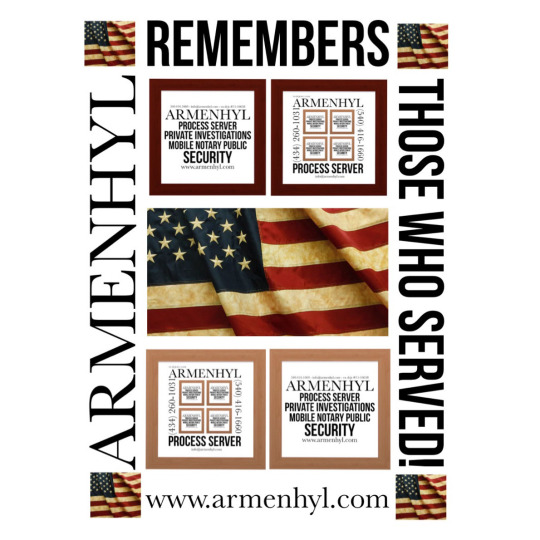
https://armenhylprivateinvestigations.tumblr.com/post/619113123867213824/happy-memorial-day-armenhyl-process-servers
#Happy Memorial Day#armenhyl#staunton va#24401#22939#22980#stuarts draft va#lexington va#process servers#commonwealth of virginia#virginia process servers#process service#Staunton VA Process Servers#Augusta County VA Process Servers#Process Service#private investigator#private#22801#22827#Verona VA#Mary Baldwin University#Woodrow Wilson#Wilson Rehabilitation#western state hospital#Craigsville VA#Shenandoah Valley Juvenile Detention Center#Middle River Regional Jail#Raphine VA Process Servers#Churchville VA Process Servers#Weyers Cave VA Process Servers
0 notes
Text
We have arrived!
After a very early start (5am meeting time!) we made it from home to Stuarts Draft, VA. The drive was a bit boring, until we hit the OH/WV border... and then it was INCREDIBLY beautiful. After over 4 hours of mountain driving, the adults are a bit tired, but the trip was worth it for the views alone.

A little stop at McDonalds for breakfast outside of Indianapolis.

Quick adult selfie in OH while making lunches out of the trunk of the van.

Our most “interesting” stop at a gas station in WV. It was an adventure!

Finally settled in and winding down with some Uno.

While we’re here, each person has a “mailbox” where we can leave encouraging notes throughout the week. Want to leave one of our youth a nice note to encourage them throughout their week? Let me know & we’ll make it happen!
Tomorrow we’re going to Sunday School & Worship with the congregation here at Calvary United Methodist Church. Our group is excited to get working on Monday also. We found out we’ll be helping Habitat for Humanity doing some demo - so we’re pumped to participate in some destruction for good!
We’ll keep you posted on our adventures as the week goes on. Love to all our families & friends following our trip!
1 note
·
View note
Photo

New doughnut shop opened up in town. Handmade in front of you, cooked/dipped/topped Galactic Doughnuts Stuart's Draft VA
2 notes
·
View notes
Text
SOME WEIRD “COINCIDENCES” I’VE NOTICED
I feel like so many of the cast have strange facts about them that overlap for some odd reason.
Examples:
-Sam lists her hometown as “Stuarts Draft, VA.” If you go on Angela’s Twitter (https://twitter.com/BBAngelaRummans), she also lists her location as Stuarts Draft, VA. This is a small town of only 9,000 people, how could this be?
-Another weird thing with Angela is that she’s originally from Hilton Head Island, SC. Tyler lives in Hilton Head Island, SC. While it’s bigger than Stuarts Draft it still only has around 37,000 residents. Kinda interesting, no?
-Sidenote about Angela is that, if I’m not mistaken, she didn’t *exactly* audition for this year. She said she auditioned for BB17, then didn’t make the cut. Then when BB20 was casting, they called her up again. At least that’s what it sounded like to me. Could it be that someone she knew was getting cast, and in order to make the twist happen they speedily cast Angela too, because she knew another HG?
-Kaitlyn and Angie have such similar personalities, it’s crazy. They’re clearly both the stereotyped hippie girl, but isn’t it odd that they would cast two HGs of the same typecast. Could it be possible that they are connected in some way?
-This one is reaching a bit, but Brett and Chris are both from Connecticut and grew up about an hour away from each other. I don’t really remember ever having HGs who were from CT, let alone two.
I don’t have anything else, but I noticed the Hilton Head thing earlier and just noticed that Stuarts Draft thing now, and it just got me really thinking. Could these all just be coincidences, or do some of the HGs actually know each other already (throwback to BB6 and BB8)?
79 notes
·
View notes
Photo



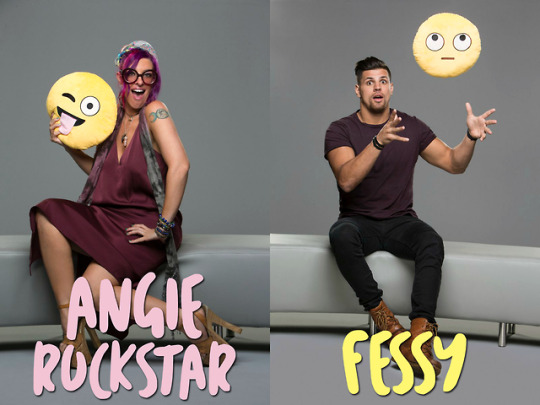






Meet The 16 New Houseguests That Will Play To Win $500K In Big Brother US 20th Season!
-Short Bios & ETCanada’s Ika Wong’s Video Interviews Below
-Read Full CBS Bios Here->Official Site
-Hollywood Reporter Interviews-Here
Steve Arienta (pronounced Ar-ee-in-tah) (40)-Ika Interview
Hometown: Parsippany, N.J.
Current City: Wanaque, N.J.
Occupation: Former undercover cop
Sam Bledsoe (27)-Ika Interview
Hometown: Stuarts Draft, Va.
Current City: Stuarts Draft, Va.
Occupation: Welder
Haleigh Broucher (pronounced Hay-Lee) (21)-Ika Interview
Hometown: Village Mills, Texas
Current City: College Station, Texas
Occupation: College student
Kaycee Clark (30)-Ika Interview
Hometown: San Diego, Calif.
Current City: Tempe, Ariz.
Occupation: Pro football player
Tyler Crispen (23)-Ika Interview
Hometown: Rossford, Ohio
Current City: Hilton Head, S.C.
Occupation: Lifeguard
Bayleigh Dayton (pronounced Bay-Lee) (25)-Ika Interview
Hometown: Lees Summit, Mo.
Current City: Atlanta, Ga.
Occupation: Flight attendant
Kaitlyn Herman (24)-Ika Interview
Hometown: Plainview, N.Y.
Current City: Encino, Calif.
Occupation: Life coach
Winston Hines (28)-Ika Interview
Hometown: Somerset, Ky.
Current City: Bowling Green, Ky.
Occupation: Medical sales rep
Angie “Rockstar” Lantry (34; turns 35 on 6/22)-Ika Interview
Hometown: Columbia, Md.
Current City: Columbia, Md.
Occupation: Stay-at-home mom
JC Monduix (28)-Ika Interview
Hometown: Miami, Fla. via Spain
Current City: West Hollywood, Calif.
Occupation: Professional dancer
Brett Robinson (25)-Ika Interview
Hometown: Oakdale, Conn.
Current City: Charlestown, Mass.
Occupation: Cyber security engineer
Angela Rummans (26)-Ika Interview
Hometown: Hilton Head, S.C.
Current City: Playa Vista, Calif.
Occupation: Fitness model
Scottie Salton (26)-Ika Interview
Hometown: Shorewood, Ill.
Current City: Chicago, Ill.
Occupation: Shipping manager
Faysal Shafaat (pronounced Fey-sull, Sha-fat) (26)-Ika Interview
Hometown: Orlando, Fla.
Current City: Orlando, Fla.
Occupation: Substitute teacher
Rachel Swindler (29; turns 30 on 7/15)-Ika Interview
Hometown: Myrtle Beach, S.C.
Current City: Las Vegas, Nev.
Occupation: Vegas entertainer
Chris “Swaggy C” Williams (23)-Ika Interview
Hometown: Bridgeport, Conn.
Current City: Bridgeport, Conn.
Occupation: Day trader
#BB20#Big Brother 20#Big Brother#Houseguests#Steve Arienta#Sam Bledsoe#Haleigh Broucher#Kaycee Clark#Tyler Crispen#Bayleigh Dayton#Kaitlyn Herman#Winston Hines#Angie Rockstar Lantry#JC Monduix#Brett Robinson#Angela Rummans#Scottie Salton#Faysal Shafaat#Chris Williams#Swaggy C
17 notes
·
View notes
Text
Title Loans in Virginia
No Credit Check Title Loan in Virginia Fast VA & Nationwide USA. Get Qualified for Title Loans Near Me Today. Fair Cash Offers. Any Location: Online Title Loans Virginia, Get a Loan With Car Title in Virginia Nationwide USA! 1 (833) 461-0143
Virginia Title Loans
Finding the best direct quick approval instant loan lender for bad credit is vital so that you get the loan at the best possible rates and no hidden fees. There are many online payday loan providers offering cash loans instantly at lower than the prevailing average rates in order to get more clients.
Title Loan Virginia is here to help you find the right instant cash lender, so that you would get the immediate cash online easily and also quickly. Hence, it is important to take your time when choosing the right online payday loan with same or next day approval in Virginia!
Virginia
Virginia Beach | Chesapeake | Arlington | Norfolk | Richmond | Newport News | Alexandria | Hampton | Roanoke | Portsmouth | Suffolk | Lynchburg | Centreville | Dale City | Reston | Harrisonburg | McLean | Leesburg | Tuckahoe | Charlottesville | Ashburn | Lake Ridge | Blacksburg | Woodbridge | Annandale | Manassas | Danville | Burke | Linton Hall | Mechanicsville | Marumsco | Oakton | Fair Oaks | South Riding | Petersburg | Springfield | Short Pump | Sterling | West Falls Church | Winchester | Fredericksburg | Cave Spring | Tysons | Staunton | Salem | Bailey's Crossroads | Herndon | Chantilly | Fairfax | Cherry Hill | Brambleton | Chester | West Springfield | Christiansburg | Hopewell | Lincolnia | Montclair | Waynesboro | McNair | Rose Hill | Meadowbrook | Woodlawn CDP | Merrifield | Buckhall | Neabsco | Lorton | Culpeper | Franklin Farm | Sudley | Franconia | Colonial Heights | Gainesville | Bon Air | Idylwood | Laurel | Burke Centre | Fort Hunt | Manassas Park | Bristol | Kingstowne | Bull Run | Highland Springs | Wolf Trap | Vienna | Hybla Valley | Glen Allen | Radford | Great Falls | Groveton | Hollins | Williamsburg | East Highland Park | Stone Ridge | Front Royal | Falls Church | Broadlands | Huntington | Brandermill | Martinsville | Kings Park West | Timberlake | Newington | Newington Forest | Mount Vernon | Poquoson | Lansdowne | Fairfax Station | Cascades | Sugarland Run | Lakeside | Stuarts Draft | Manchester | Wakefield | Dranesville | Forest | Loudoun Valley Estates | New Baltimore | George Mason | Wyndham | Lowes Island | Yorkshire | Madison Heights | Gloucester Point | Countryside | Belmont | Independent Hill | Lake Monticello | Warrenton | Fort Lee | Lake Barcroft | Fishersville | Triangle | Dunn Loring | Crozet | Seven Corners | Innsbrook | Pulaski | Purcellville | Woodburn | Rockwood | Hollymead | Smithfield | Dumbarton | Greenbriar | Fair Lakes | Abingdon | Floris | Laurel Hill | Wytheville | Franklin | Lake of the Woods | Vinton | South Boston | Montrose | University of Virginia | Long Branch | Sandston | Bellwood | Fort Belvoir | Ashland | Mantua | Carrollton | Woodlake | Farmville | North Springfield | Collinsville | Lexington | Ettrick | Strasburg | Belle Haven CDP | Aquia Harbour | Galax | Bedford | Buena Vista | Bridgewater | Pimmit Hills | South Run | Massanetta Springs | Potomac Mills | Bensley | Dulles Town Center | Bealeton | Woodstock | Emporia | Marion | Covington | Crosspointe | Dumfries
Nationwide USA
Alabama | Alaska | Arizona | Arkansas | California| Colorado | Connecticut | Delaware | Florida | Georgia | Hawaii | Idaho | Illinois | Indiana | Iowa | Kansas | Kentucky | Louisiana | Maine | Maryland | Massachusetts | Michigan | Minnesota | Mississippi | Missouri | Montana | Nebraska | Nevada | New Hampshire | New Jersey | New Mexico | New York | North Carolina | North Dakota | Ohio | Oklahoma | Oregon | Pennsylvania | Rhode Island | South Carolina | South Dakota | Tennessee | Texas | Utah | Vermont | Virginia | Washington | West Virginia | Wisconsin | Wyoming | Washington DC (District of Columbia)
Car Title Loans in Virginia
There are many offers like title loans online with instant decision on loan approval or same day cash advance loans for bad credit that you will find. You need to dig deep and choose wisely considering both cons and pros of such advances. The reality is that no one can guarantee you 100% approval and they will definitely carry out some sort of background check before lending you the quick loan online, even if you need emergency cash now.
Title Loans in Virginia
We can help you get the title loans you need–especially if you are dealing with an emergency situation. Best of all, unlike the bank, you won’t need to wait for too long to get approved for your loan. Unlike other lenders, Virginia Title Loan will give you a loan based on the value and equity of your car. Our title loans are accessible to everyone, even if you’ve been turned down by other lenders because of bad credit. Since our application process is super easy, the entire process can be as short as 15 minutes to get your loan approved! Even if you have a low credit score or a poor payment history, you can still get a loan and drive off in your own car!
Auto Title Loan VA
Virginia Title Loans is happy to help those who have fallen into a rough patch as we know these things are temporary. Aside from credit score, another large determining factor when trying to get a loan is your employment and income status, meaning when you’re out of a job or are self-employed the process gets exceedingly difficult.
At Virginia Title Loans, we’re happy to work around these kinds of situations and still provide cash to our customers with an auto title loan. These are the times that you’re going to need cash the most, and Title Loans Virginia is here to help the communities that have allowed us to remain in business for so long. No matter how unique your situation might be, we’re happy to help you evaluate your options at no cost to you and find a way to get you your cash.
1 note
·
View note
Text
GYMS Act could offer federal relief to fitness facilities impacted by the pandemic – WDBJ7

AUGUSTA COUNTY, Va. (WHSV) – Gyms are asking for federal relief while working to bounce back after taking a hard hit from the pandemic.
“Back in 2020, we were one of the first to close. We were certainly one of the last to reopen. Revenues here fell dramatically,” Mark Embrey, owner of Fast Fitness said.
He added that it got to the point where they almost had to close the doors of the only gym in Stuarts Draft for good.
“Members just weren’t returning. They weren’t returning due to the atmosphere that’s here being around other people,” Embrey said.
Unlike other small businesses and restaurants, gyms couldn’t offer pandemic-friendly services like curbside pick-up and were left with very few options for alternative revenue.
“We had lost, looking at our revenue about 40-45%,” Embrey said.
As vaccines continue to roll out, more people are starting to return to the gym.
However, Embrey said they are still well behind where they were pre-COVID, and federal funding would be a great help for things like replacing old equipment and cleaning.
“We have additional cleaning supplies that we’re going locally through Cintas. We’ve increased that to give our members a better comfort level,” Embrey said.
If passed, the “Gym Mitigation and Survival” Act would provide a $30 billion fund to offer grants of up to $25 million for fitness facilities that have taken a hit due to the pandemic.
“Physical fitness is something that people love to do, and people want to get back to a sense of normalcy, and they want to come back,” Embrey said.
He said these funds would help them keep the doors open and continue offering a safe, clean environment for the community.
Copyright 2021 WHSV. All rights reserved.
source https://wealthch.com/gyms-act-could-offer-federal-relief-to-fitness-facilities-impacted-by-the-pandemic-wdbj7/
0 notes
Text
An update today on the green house being built along 340 in Stuarts draft Virginia
#PassingBy #DrivingBy #GoingBy #site
#Building #Greenhouse #green #Built #Highway340 #StuartsDraft #Virginia #Update #Today #Video #Highway #VA #Construction #ConstructionCrew #see #ConstructionEquipment #Equipment #Excavation #Excavating #Earth #Dirt #Mounds #MovingItrightalong #Ground#CommercialGreenhouse #Commercial
1 note
·
View note
Text
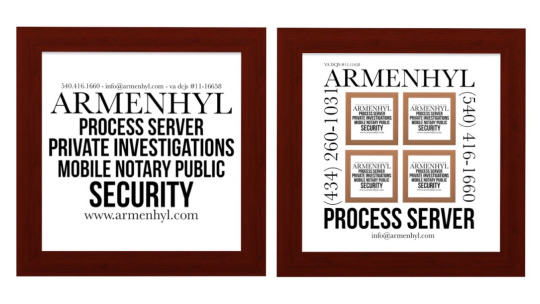
ARMENHYL GROUP LLC provides Process Service for Staunton and Augusta County, VA. Our Process Servers also cover the Surrounding Counties & Locations: Afton, Alleghany, Amherst, Appomattox, Bath, Bedford, Botetourt, Buena Vista, Campbell, Craig, Craigsville, Covington, Culpeper, Danville, Elkton, Grottoes, Halifax, Harrisonburg, Highland, Lexington, Lynchburg, Madison Heights, Massanutten, Monterey, Montgomery, Nellysford, Nelson, Pittsylvania, Pulaski, Franklin, Roanoke, Rockbridge, Rockingham, Salem, Smith Mountain Lake, and throughout the Commonwealth of Virginia. ARMENHYL provides Same Day Service & RUSH Service. We are reliable and professional! Need a Virginia Process Server? Contact ARMENHYL ASAP! We look forward to being your one source for Civil Process! Please visit us at www.armenhyl.com, on social media or contact us at [email protected] (540) 416-1660, (434) 260-1301
#process server#process server staunton va#process service#virginia process servers#virginia process service#process server verona va#process server waynesboro va#process server fishersville va#process server 24401#process server 22980#process server august county va#process service staunton va#augusta health#stuarts draft va#lexington va#lovingston va#verona va#craigsville va#western state hospital#virginia state police#wilson rehabilitation#city of staunton#shenandoah valley#blue ridge#mary baldwin university#hershey chocolate of virginia#middle river regional jail#shenandoah valley juvenile center#united states attorney office western district of virginia#united state district court western district of virginia
0 notes
Text
https://youtu.be/1TUzBuPYNhM
youtube
ARMENHYL Virginia Process Servers are available throughout the Commonwealth of Virginia!
Process Service - Culpeper VA 22701 - Warrenton VA 20186 - Charlottesville VA 22901 - Orange VA 22960 - Madison VA 22727 - Manassas VA 20108 - Berryville VA 22611 - Leesburg VA 20175 - Ashburn VA 20103 - Fairfax VA 22030 - McClean VA 22101 - Arlington VA 20330 - Reston VA 20190 - Alexandria VA 22206 - Crozet VA 22932 - Lake Monticello VA 22963 - Lovingston VA 22949 - Louisa VA 23093 - Harrisonburg VA 22801 - Staunton VA 24401 - Front Royal VA 22630 - Winchester VA 22601 - Elkton VA 22827 - Fishersville VA 22939 - Waynesboro VA 22980 - Stuarts Draft VA 24477 - Craigsville VA 24430 - Verona VA 24482 - Bridgewater VA 22812 - Weyers Cave VA 24486 - Dayton VA 22821 - Hinton VA 22831 - Broadway VA 22815 - Timberville VA 22853 - McGaheysville VA 22840 - Lexington VA 24450 - Covington VA 24426 - Monterey VA 24465 - Luray VA 22835 & Surrounding Areas throughout the Commonwealth of Virginia!
Contact ARMENHYL today at [email protected] - (434) 260-1031 - (540) 416-1660!
Visit ARMENHYL at www.armenhyl.com and on social media!
We look forward to our next opportunity to serve you!

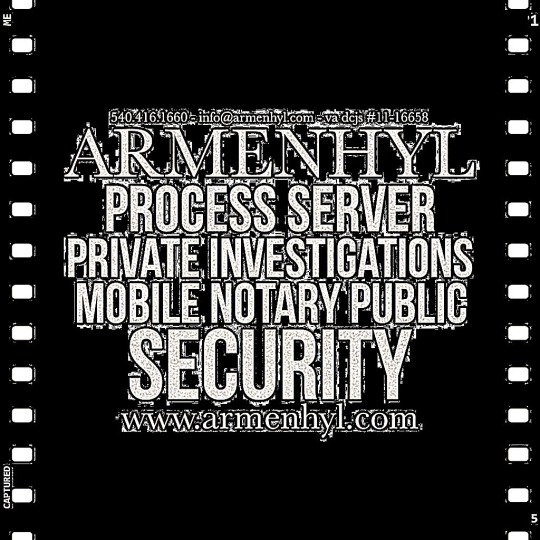

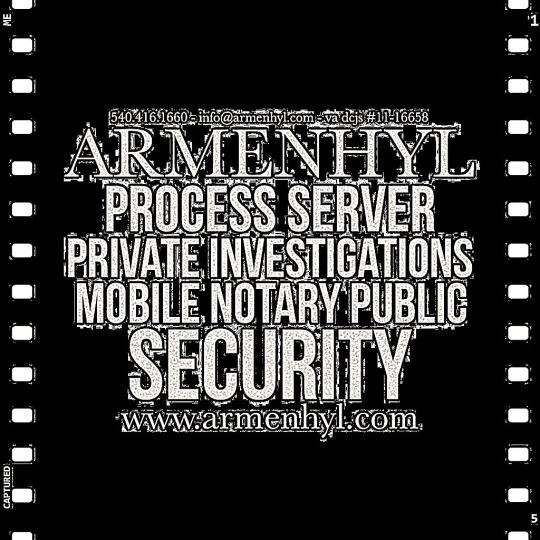

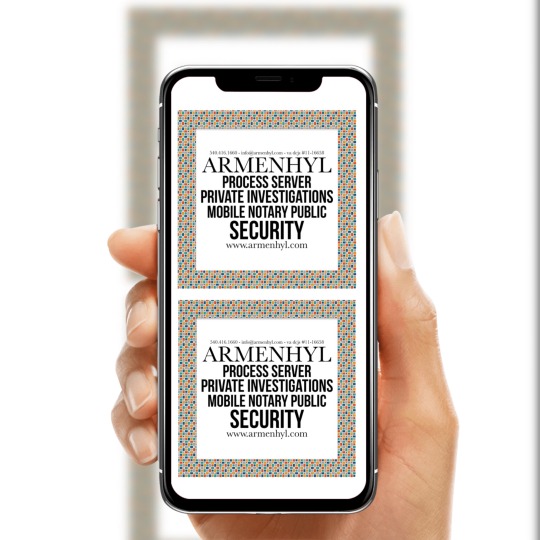
0 notes